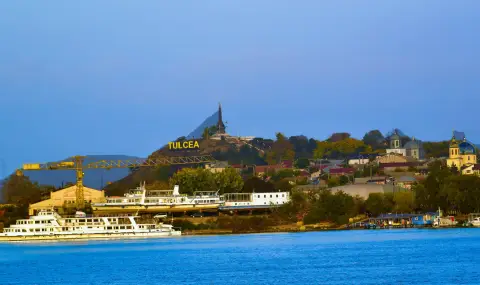The regional project for the development of water supply and sewerage networks in the eastern Romanian district of Tulcea, worth more than 200 million euros, whose financing contract was signed at the end of 2022, has begun works to expand networks in the city, and the water treatment plant in the city of Sulina, a cultural heritage site built in 1860 by the Queen of the Netherlands, will be expanded, BTA reported, citing the Agerpress agency.
According to the managing director of the regional operator of water services "Aquaserv" AD Valentin Ifrim, the works that will be carried out relate to both the water supply and sewerage networks, as well as the creation or modernization of drinking water treatment plants (WTP) and wastewater treatment plants (WWTP).< /p>
Referring to the problems that arise in the city of Tulcea after every heavy rain due to the rainwater that collects in some areas, Valentin Ifrim said that, as in many other settlements in the country, the sewage collection network matches with that for rainwater, which makes it difficult to collect water during torrential rains.
The current sewer network is from 1960, added Ifrim, and continued that "all these stations have undergone significant modernization works, including the Sulina station, a cultural heritage site built in 1860 by the Queen of the Netherlands, known , that at that time the European Danube Commission, hosted by Sulina, gathered representatives from all over Europe. All the buildings in the treatment plant have been rehabilitated according to what existed at the beginning.
According to historical documents, the cities of Tulca and Sulina have had PTPV with ozone technologies since the second half of the 19th century, most likely with the support of international bodies.
Within the current modernization project, 273,296 km of drinking water networks will be extended and rehabilitated in 20 settlements in the district, 17 WWTPs will be built, seven WWTPs will be rehabilitated and another three will be expanded. In addition, 148.28 km of sewage collection networks will be expanded and rehabilitated in ten settlements in the district, two WWTPs will be rehabilitated, five more will be expanded, and two WWTPs will be built.
The total estimated value of this project is EUR 222,115,490 excluding VAT, of which EUR 114,508,514 for the water supply system and EUR 107,606,976 for the sewage system.
Established on the basis of the Treaty of Paris of 1856, the European Danube Commission is based in the Danube ports of Galaţi and Sulina and for decades set the rules of navigation and policy on the Sulina Arm. During the existence of this structure in the city of Sulina from the United States of America, the first electric generator was brought for the Palace of the Commission, its gardens and the harbor quay, the first telephone line between the ports of Sulina and Galats was opened, the streets were paved, the first sewage network was built , and the Queen of the Netherlands financed the construction works of the water station. In Sulina at that time there were seven consulates and 20 vice-consulates or consular representations, grain exchange warehouses and about 18 foreign shipping lines.
At the same time, Tulcea also developed during this period - ship owners built homes or developed businesses in the port city on the Danube, and the sellers of drinking water cans were replaced by a drinking water network in the first half of the 20th century.
